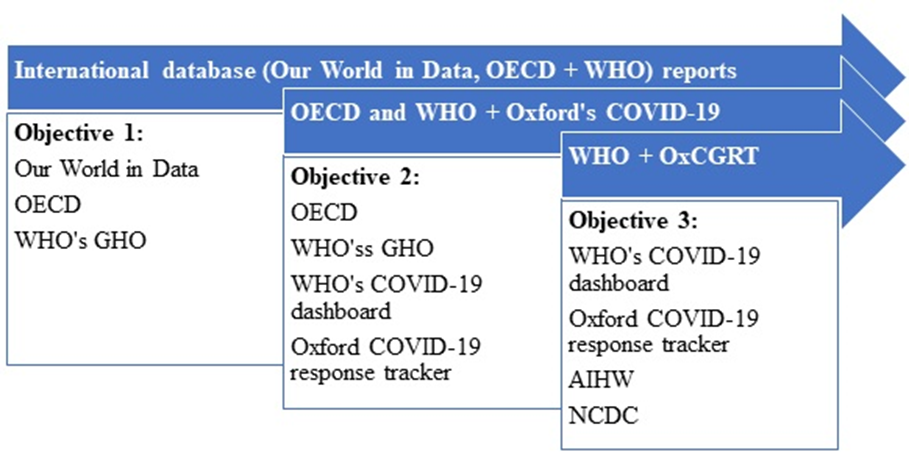The Impact of World Pandemics on Health Services Management: The Covid 19 Experience in Nigeria and Australia
Ezekiel U Nwose, Charles C Okonkwo, Rasheda Khanam, Gavin Beccaria
Abstract
This research aims to evaluate the impact of COVID-19 pandemic on health services management using the COVID-19 experiences as the major means of measure. Secondary data would be used to compare the Low and Medium-Income Countries (LMIC) and the High-Income Countries (HIC), focusing on health systems in Nigeria as a LMIC and Australia as a HIC. The research will also develop and operationalise the concept of health care workers’ experiences during pandemics
and investigate how the Covid-19 pandemic affected the health workplace, including its long- and short-term impact on HCWs health and wellbeing. This is with a view to exploring the key issues to this phenomenon and developing a theoretical framework for development of future service management intervention policies and strategies in the increasingly volatile health-care climate and workplace.
Steps
Abstract
This research aims to evaluate the impact of COVID-19 pandemic on health services management using the COVID-19 experiences as the major means of measure. Secondary data would be used to compare the Low and Medium-Income Countries (LMIC) and the High-Income Countries (HIC), focusing on health systems in Nigeria as a LMIC and Australia as a HIC. The research will also develop and operationalise the concept of health care workers’ experiences during pandemics and investigate how the Covid-19 pandemic affected the health workplace, including its long- and short-term impact on HCWs health and wellbeing. This is with a view to exploring the key issues to this phenomenon and developing a theoretical framework for development of future service management intervention policies and strategies in the increasingly volatile health-care climate and workplace.
Introduction – conceptual framework
The protocol
Study design: This was designed to be a comparative observation study and employing secondary data. Mixed methods statistical design would be as outlined (Table 1).
Table 1: Summary of research objectives and data sources.
| A | B | C | D | E |
|---|---|---|---|---|
| Research objective | Potential Sources | Variables | Qual or Quant | Analytic Techniques |
| 1 & 2 | (Our World in Data, 2024) | Location, stringency index, deaths | Quantitative | Panel data analysis |
| (OECD, 2023) | Socioeconomic factors (SEC) | Quantitative | Time series data analysis | |
| WHO Global Health Observatory†† | Quantitative | Cross sectional analysis | ||
| 1 & 3 | AIHW‡‡ | Health system responses, | Qualitative and Quantitative | Critical Descriptive Analysis and panel data analysis |
| NCDC*† | Health system response, | Qualitative and quantitative | Thematic Content Analysis | |
| 2 & 3 | WHO COVID-19 Dashboard*‡ | Location, population, deaths, vaccines | Quantitative | Cross sectional analysis |
| Oxford COVID-19 Government Response Tracker*†† | Government response indicator, location, risk | Quantitative and Qualitative | Panel data analysis and Thematic content analysis | |
| All 1 – 3 | Literature review | Systematic review | Thematic and meta-analysis |
Keys
SEC: Gender, Marital Status, Education Level, Location, Experience, Income, Age, Role
†https://ourworldindata.org/explorers/coronavirus-data-explorer – re: (Our World in Data, 2024)
‡Health Workforce - OECD – re: (OECD, 2023)
††Global Health Workforce statistics database (who.int) – re: (World Health Organization, 2023, 2024a, 2024b)
‡‡https://www.aihw.gov.au/reports/workforce/health-workforce#impact – re: (AIHW, 2022)
*†https://ncdc.gov.ng/diseases/sitreps/?cat=14&name=An%20update%20of%20COVID-19%20outbreak%20in%20Nigeria – re: (NCDC, 2023)
*‡https://data.who.int/dashboards/covid19/cases?n=c – re: (WHO, 2024)
*††COVID-19 Government Response Tracker | Blavatnik School of Government (ox.ac.uk) – re: (Blavatnik School of Government, 2023)
Setting and data: Secondary data of observational reports would be obtained from World Health Organization (WHO), our world in data, and WHO observatory as well as Australia Institute of Health and Welfare (AIHW) and Nigeria Centre for Disease Control (NCDC). The applications of different data to answer the various research objectives are as indicated (Table 1).
Ethical consideration: In this study, we will utilize secondary data from the World Health Organization (WHO) data dashboard, OECD, Our world in data and the Australian Institute of Health and welfare (AIHW). Thus, this study does not require approval from the Ethics Committee of the University of Southern Queensland, Australia.
Conclusion – statement of significance
This study will help elucidate why Australia spent more in COVID-19 pandemic management compared to Nigeria, but also appears to have recorded more casualties. It is hoped that the findings would highlight lesson for HIC and LMIC to learn from each other.
References
AIHW. (2022). Health workforce . Retrieved 5th June, 2024 from https://www.aihw.gov.au/reports/workforce/health-workforce#impact
Blavatnik School of Government. (2023). Covid-19 Government Response Tracker .
Retrieved 5th June, 2024 fromhttps://www.bsg.ox.ac.uk/research/covid-19-government-response-trackerr
NCDC. (2023). An update of COVID-19 outbreak in Nigeria . Retrieved 5th June, 2024 from https://ncdc.gov.ng/diseases/sitreps/?cat=14&name=An%20update%20of%20COVID-19%20outbreak%20in%20Nigeria
OECD. (2023). Health Workforce. In Health at a Glance 2023 - OECD Indicators . https://www.oecd.org/health/health-at-a-glance//
Our World in Data. (2024). Estimated cumulative excess deaths per 100,000 people during COVID-19 .
Retrieved 5th June 2024 fromhttps://ourworldindata.org/explorers/coronavirus-data-explorerr
WHO. (2024). WHO COVID-19 dashboard . Retrieved 5th June, 2024 from https://data.who.int/dashboards/covid19/cases?n=c
World Health Organization. (2023). World health statistics 2023: monitoring health for the SDGs, sustainable development goals . Retrieved 5th June 2024 from https://www.who.int/publications/i/item/9789240074323
World Health Organization. (2024a). Global Health Workforce statistics database .
Retrieved 5 June, 2024 fromhttps://www.who.int/data/gho/data/themes/topics/health-workforcee
World Health Organization. (2024b). World health statistics 2023: monitoring health for the SDGs, sustainable development goals . https://iris.who.int/bitstream/handle/10665/376869/9789240094703-eng.pdf?sequence=11




